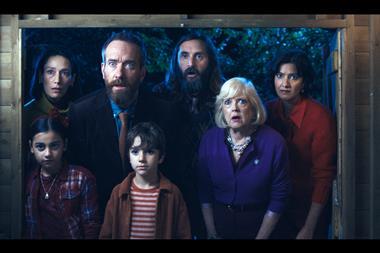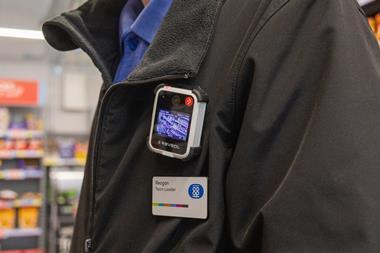Tesco is planning to pitch itself against Argos and department stores with a new catalogue business. What factors might stand in the way of yet another success story, asks Glynn Davis
Just as it was with its move into the US, Tesco is being guarded about plans for a mail order catalogue, expected to hit the market later in the year. Although very little has been announced by Tesco, the appointment of Steve Haithwaite as media publishing director signals its intention to create a sizeable catalogue business. Haithwaite has previously worked at Littlewoods' Shop Direct, mail order business Grattan and Argos Retail Group where he managed a team of 70 and had a budget of £80m.
An executive who advises Tesco on its multi-channel strategy says: "It looks like it will be a direct competitor to Argos as we've been led to believe that it will take a 'big book' approach and distribute the catalogues through its stores. This is a cheap way to distribute them and Tesco has great footfall."
Mike Dennis, analyst at Cheuvreux, says he has heard the catalogue will probably run to 1,000 pages compared with the typical 1,700 in an Argos catalogue, and that distribution will be limited to 300 stores initially, comprising 120 Extra outlets with the remainder made up of its top superstores.
The catalogue will probably act as an extra channel for sales of non food, allowing Tesco to continue growing the non food division without swamping its stores' floor areas. Slower-moving categories such as furniture lend themselves well to catalogues and will enable Tesco to grow new product areas. It will also pitch it against the likes of Debenhams and John Lewis, which has a very successful multi-channel operation.
Clothing is another possibility, especially considering that in 1999 Tesco operated a number of small catalogues through a joint venture with Grattan. However, Nick Allen, who was then business development director at Grattan and is now chief executive of specialist e-fulfilment company Zendor, part of the catalogue company
N Brown, says Tesco would have realised the difficulty in selling fashion clothing via mail order. Long lead times do not sit well with a fast-moving category and the high level of returned items make it difficult. "It's hard to plan the right quantities and running in-store promotions can also cause confusion if the same products are in the catalogue," he says.
Michael Daly, founder of DTS logistics, suggests the new catalogue will probably "only contain a few selected lines of clothing, a token gesture".
According to mail order consultant Andy Paterson, a catalogue business will enable Tesco to hold products at a small number of warehouses and then deliver them via local stores or direct to the customers' home.This is a much more efficient use of working capital compared with holding extra stock at its stores. This is important for electrical goods where margins are notoriously low.
Whether Tesco will be handling fulfilment itself or outsourcing it to an organisation such as Zendor (until the operation has sufficient scale to bring it in house) is not clear. But it is generally accepted that it will operate differently to its food home delivery, because the latter centres on the store-picking model, which would be difficult to replicate for a non food offer of bulky items.
Tesco should also benefit from the expertise of its key non food managers, John Hoerner and Terry Green, who worked together at Arcadia, says Paterson. "They both recognised catalogue retailing and e-commerce were key ways to leverage their central costs and increase value from individual consumers."
Darren Shirley, food analyst at Shore Capital, suggests another benefit of a catalogue is that it is a safe bet. It not only takes Tesco further into non food but will also enable it to grow its revenues away from its stores base, which is coming under increasing scrutiny from the regulators.
As for a launch date, one City analyst says that with the complexity of fulfilment still to be sorted out, the first catalogue might not appear until spring next year.
Just as it was with its move into the US, Tesco is being guarded about plans for a mail order catalogue, expected to hit the market later in the year. Although very little has been announced by Tesco, the appointment of Steve Haithwaite as media publishing director signals its intention to create a sizeable catalogue business. Haithwaite has previously worked at Littlewoods' Shop Direct, mail order business Grattan and Argos Retail Group where he managed a team of 70 and had a budget of £80m.
An executive who advises Tesco on its multi-channel strategy says: "It looks like it will be a direct competitor to Argos as we've been led to believe that it will take a 'big book' approach and distribute the catalogues through its stores. This is a cheap way to distribute them and Tesco has great footfall."
Mike Dennis, analyst at Cheuvreux, says he has heard the catalogue will probably run to 1,000 pages compared with the typical 1,700 in an Argos catalogue, and that distribution will be limited to 300 stores initially, comprising 120 Extra outlets with the remainder made up of its top superstores.
The catalogue will probably act as an extra channel for sales of non food, allowing Tesco to continue growing the non food division without swamping its stores' floor areas. Slower-moving categories such as furniture lend themselves well to catalogues and will enable Tesco to grow new product areas. It will also pitch it against the likes of Debenhams and John Lewis, which has a very successful multi-channel operation.
Clothing is another possibility, especially considering that in 1999 Tesco operated a number of small catalogues through a joint venture with Grattan. However, Nick Allen, who was then business development director at Grattan and is now chief executive of specialist e-fulfilment company Zendor, part of the catalogue company
N Brown, says Tesco would have realised the difficulty in selling fashion clothing via mail order. Long lead times do not sit well with a fast-moving category and the high level of returned items make it difficult. "It's hard to plan the right quantities and running in-store promotions can also cause confusion if the same products are in the catalogue," he says.
Michael Daly, founder of DTS logistics, suggests the new catalogue will probably "only contain a few selected lines of clothing, a token gesture".
According to mail order consultant Andy Paterson, a catalogue business will enable Tesco to hold products at a small number of warehouses and then deliver them via local stores or direct to the customers' home.This is a much more efficient use of working capital compared with holding extra stock at its stores. This is important for electrical goods where margins are notoriously low.
Whether Tesco will be handling fulfilment itself or outsourcing it to an organisation such as Zendor (until the operation has sufficient scale to bring it in house) is not clear. But it is generally accepted that it will operate differently to its food home delivery, because the latter centres on the store-picking model, which would be difficult to replicate for a non food offer of bulky items.
Tesco should also benefit from the expertise of its key non food managers, John Hoerner and Terry Green, who worked together at Arcadia, says Paterson. "They both recognised catalogue retailing and e-commerce were key ways to leverage their central costs and increase value from individual consumers."
Darren Shirley, food analyst at Shore Capital, suggests another benefit of a catalogue is that it is a safe bet. It not only takes Tesco further into non food but will also enable it to grow its revenues away from its stores base, which is coming under increasing scrutiny from the regulators.
As for a launch date, one City analyst says that with the complexity of fulfilment still to be sorted out, the first catalogue might not appear until spring next year.


















No comments yet